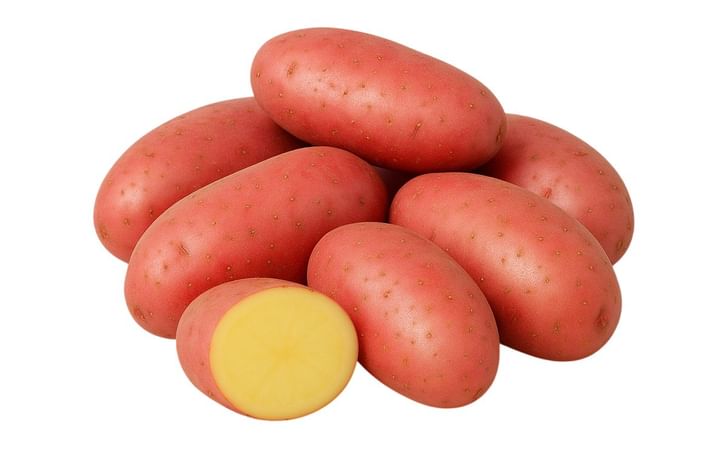Qingshu 9 is a high-yielding Chinese potato variety developed by the Chengdu Institute of Biology and released in 2001. It produces medium to large, long oval tubers with reddish-pink skin and light yellow flesh. Maturing in 110–130 days, it is widely cultivated in southwest and central China, especially in Sichuan, Yunnan, and Guizhou.
Qingshu 9 is known for its excellent resistance to late blight and tolerance to bacterial wilt, making it suitable for low-input farming systems. It offers good cooking quality with a mild, slightly sweet flavor and is ideal for boiling, frying, and industrial processing. Its long shelf life and strong adaptability make it a valuable variety for commercial production.
Morphological Characteristics:
- Tuber Shape: Long oval to cylindrical
- Skin Color: Smooth, light red to reddish-pink
- Flesh Color: Light yellow
- Eye Depth: Shallow
- Tuber Size: Medium to large
Agronomic Traits:
- Maturity: Medium to late (110–130 days)
- Yield Potential: Very high (up to 45–50 tons/ha)
- Altitude/Region Adaptation: Widely grown in southwest and central China, especially Sichuan, Yunnan, and Guizhou
- Soil Preference: Fertile, well-drained loamy soils
Resistance and Tolerance:
- Disease Resistance: High resistance to late blight, Good tolerance to bacterial wilt and early blight
- Stress Tolerance: Performs well under variable climate and low-input farming
Culinary and Market Use:
- Texture (Cooked): Moderately firm to slightly floury
- Flavor: Mild and slightly sweet
- Best Uses: Boiling, frying, mashing, and industrial processing (chips and starch)
- Storage Quality: Excellent shelf life with good transportability
Advantages:
- Very high yield potential
- Strong disease resistance, especially to late blight Versatile use in fresh market and industry
- Well-suited for large-scale commercial production

